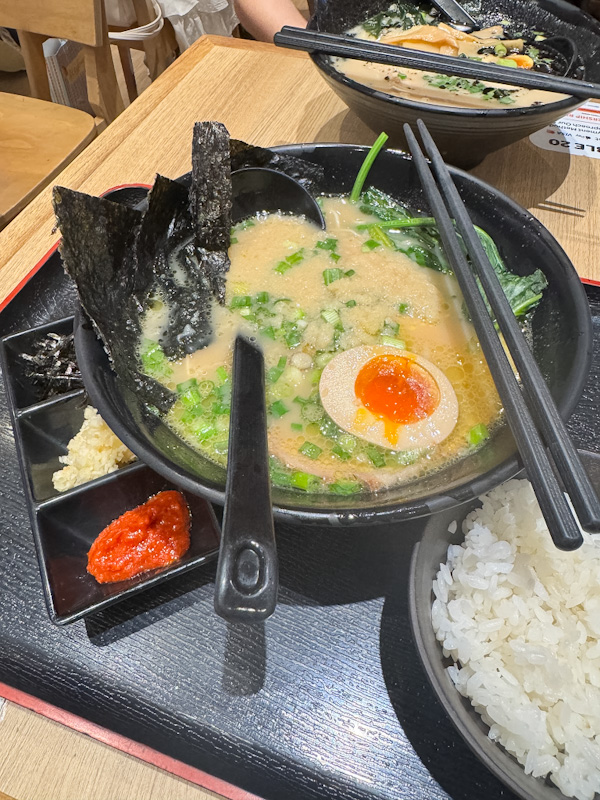WHAT WE ATE
- Tsukemen (Fish and Pork) – 85/100, Fukuoka
- Tonkotsu Ramen – 75/100, Fukuoka

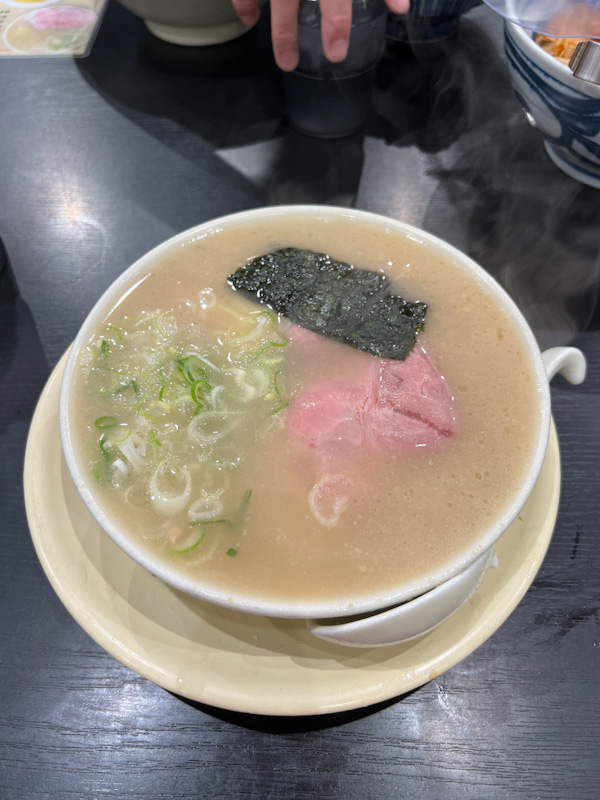

In the heart of Hakata, Fukuoka, Kirin Nakasu stands out as a popular ramen destination. This restaurant is renowned for two specialties: the classic tonkotsu ramen and tsukemen.
Tsukemen offers a unique twist on traditional ramen. The noodles and broth are served separately, allowing diners to control the flavor intensity of each bite. The sauce is highly concentrated and salty, not meant for direct consumption but mixing in some Dashi soup from the provided kettle can be used to dilute the sauce if it’s too salty, or to create a drinkable soup at the end of the meal.
This serving style ensures that customers can customize their ramen experience, adjusting the flavors to their liking throughout the meal.
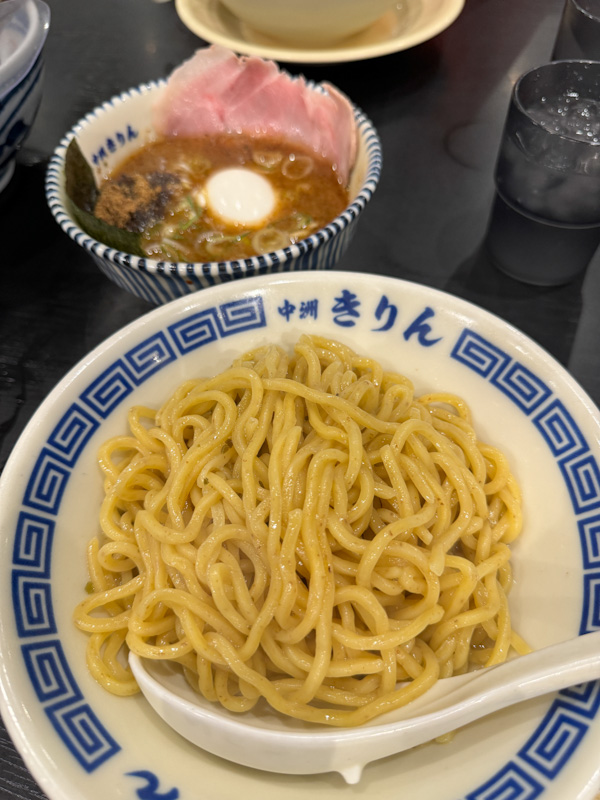
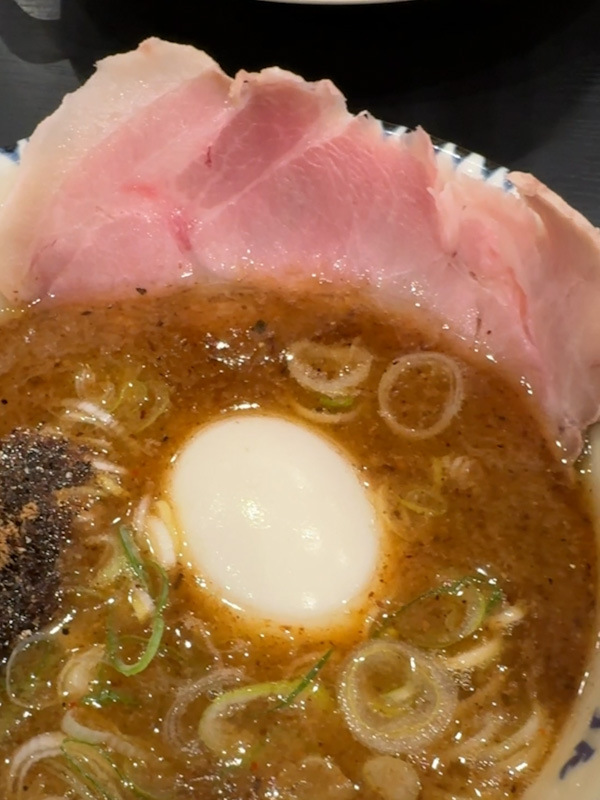
Tsukemen: 85/100
Noodle: 25/35
The thick, pastel yellow noodles have a glistening surface and a chewy, springy mouthfeel with a clean bite. There’s a unique sulphurous eggy undertone, likely from raw egg white stirred in, leaving a transparent gooey residue. The noodles are served hot without an option for cold.
Soup: 30/35
The dipping sauce combines bonito and pork. While warned about its saltiness, it’s actually mellower than expected. The strong bonito flavor and savory umami-rich body have subtle spicy undertones. The balance between creamy pork and sharp bonito is unique. Adding dashi broth at the end turns it into a drinkable soup, but the bonito taste can become dominant and fishy for some.
Meat: 20/20
The chashu is a big but thin slice of slightly undercooked pork, tender and juicy when soaked in the sauce. The chewy texture enhances the sweetness of the pork, though the fatty parts are a bit tough.
Topping: 10/10
Toppings include green onions, a slice of seaweed that soaks up the sauce and becomes umami-rich, and an egg marinated in brine, delivering a mild salty kick.

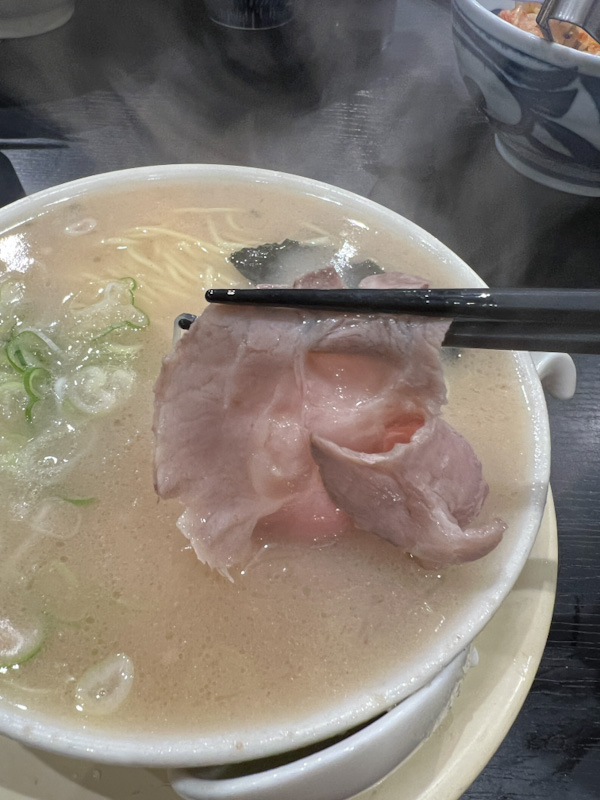
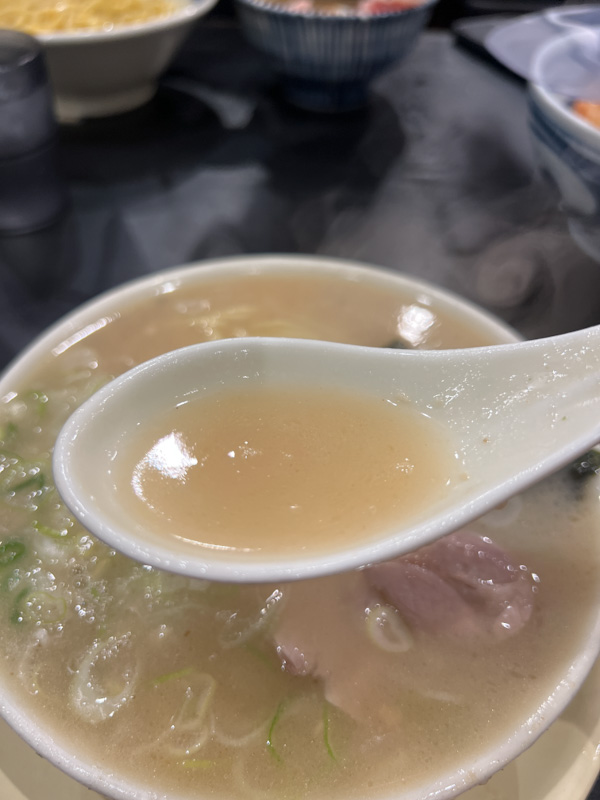

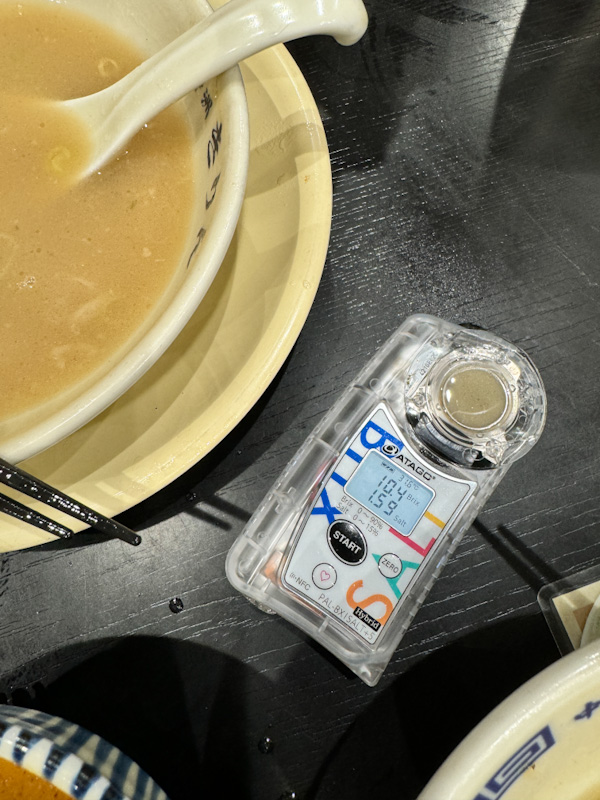
Tonkotsu Ramen: 75/100
Noodle: 25/35
The noodles are medium thick and straight, slightly thicker than most Hakata-style noodles. They have a firm texture with slight springiness and a nice earthy wheat sweetness. The noodle hardness can be customized on a 4-level scale. We ordered soft, but it was served more like medium.
Soup: 25/35
The soup is served generously to the brim, reminiscent of overflowing sake cups. It’s rich with a slightly thick consistency and strong pork flavor with a lingering sweetness. However, it’s a bit too salty, registering 1.6 on our refractometer. The porkiness and saltiness can become overwhelming as the meal progresses.
Meat: 20/20
The chashu is thinly sliced and slightly undercooked, finishing cooking in the hot soup. The resulting meat is very tender and juicy, with a chewy texture that draws out the pork’s sweetness. The fatty parts are a bit tough to tear, but overall, it’s a decent topping.
Topping: 5/10
Toppings are classic and minimal: some green onions and a delicious piece of seaweed.
DISCLAIMER
One man’s meat is another man’s poison.
Find out more about our palettes and how we evaluate our ramen here. 😉


